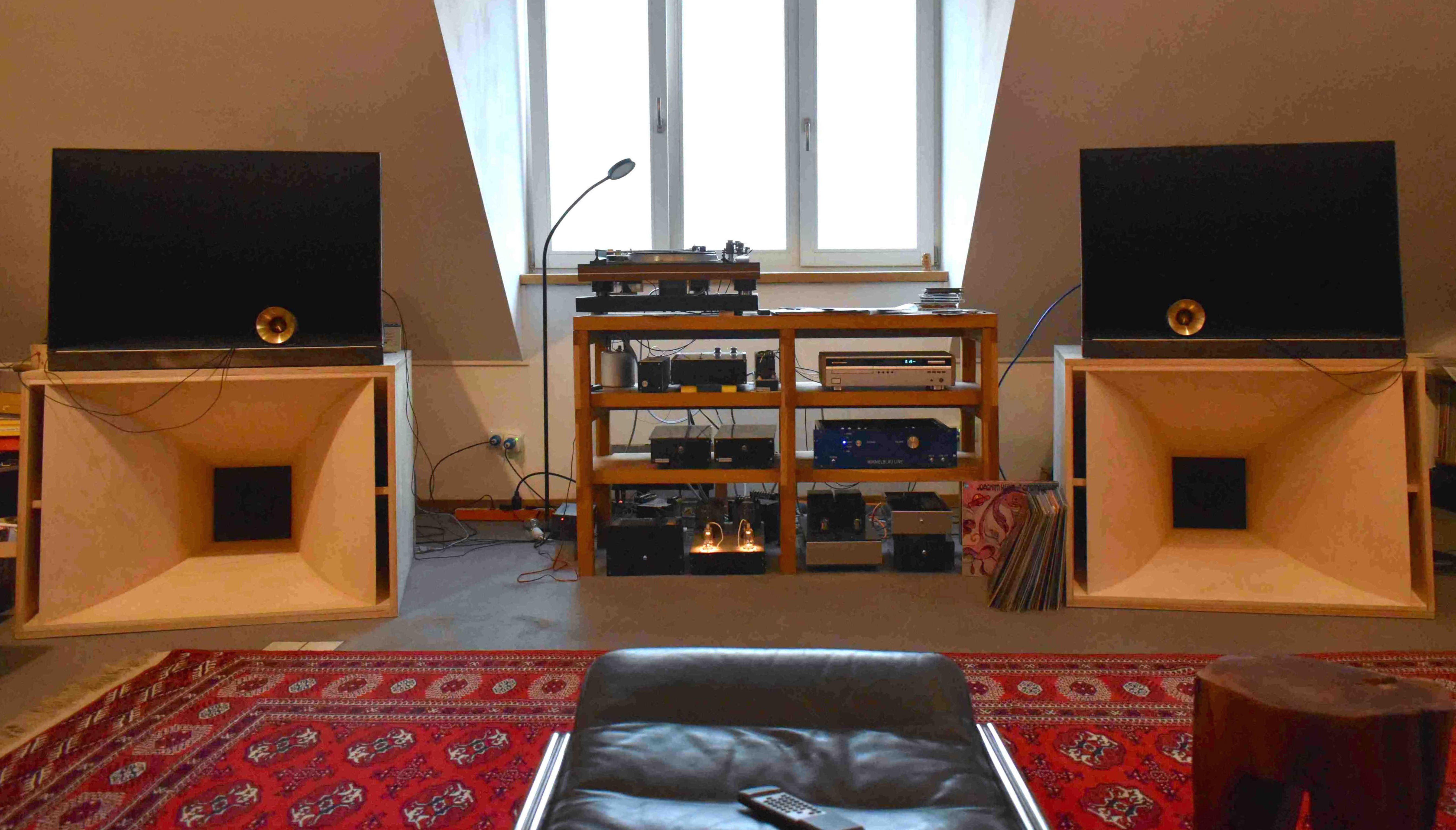
Phase and Time 2
![]() Text to speech – TestHiFi blog: Phase and Time 2
Text to speech – TestHiFi blog: Phase and Time 2
The system that shouldn’t work well – phase and time completely ignored!
Last time I wrote about phase and time issues of loudspeakers. A result of my initial problem with multiway speakers,
that kept me using widebanders for a while (during the 1980s). And lead to enjoy Quad electrostatics.
Well, this is over for some decades now. I heard Vandersteens and others with good time response and found my own crossover alignments to implement perfect step response into my designs.
Now I’m going to destroy all this efforts with a subjective report 😉
Recently I visited a friend to listen to a common effort, his new hifi system built into the new listening room.
The room was done with minimal acoustical treatment, but well considered compromise of drywall stiffness and damping properties.
This is a completely subjective description of a loudspeaker system that I would never build for myself (or so I thought).
But indeed enjoyed listening to quite a lot!
What’s wrong with it?
Well, look at that midrange horn:
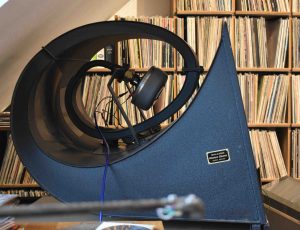
WE London horn
Several meters of delayed output compared to low and high frequencies.
See the tweeter in comparison (bronze part in black MF horn mouth):
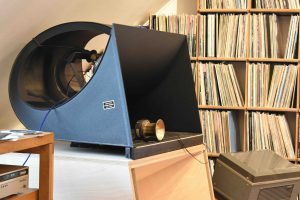
WE and JBL
And now imagine an analog crossover that delays the tweeter according to the midrange path – impossible!
Why might that even work at all?
There is an old public address stacking strategy with systems running in parallel.
If placed beneath each other they would produce strong off-axis comb filters with wide bandwidth (coloration).
But stacked far from each other, comb filtering gets very dense and narrow, less offensive.
Here the tweeter is of course only running parallel to the midrange within the crossover frequency range.
Due to the large delay the comb filter is narrow and dense as described above (more about comb filters in the
interference blog). Constrained between 3 and 4 kHz. Above – pure high frequencies (HF). Below, pure mid frequencies (MF).
Still, the MF is compromised: the horn is constructed from welded steel sheets. In this case, damped by magnetic sheets on in- and outside. Nevertheless, this thing rings quite obviously!
The bass horn is designed for optimum midrange linearity, directivity control and low internal LF loss.
Minimizing floor reflection influence, that reflected energy is in phase with direct sound up to 1.3 kHz!
So no more comb filtering by this unavoidable reflexion, and less uncontrolled reflected low midrange energy bouncing back from other room surfaces. This usually helps to provide an „I can walk into the recorded room“ or „life acoustics“ feeling.
Low frequency (LF) is time-aligned to MF via a digital speaker control system, used for LF only. For delay, some slight EQ, and crossover filtering.
Besides the additional „NO“ for me (LF DSP controller), everything is „clean“. Tubes directly after the DAC chip, and tubes for all other signals as well. Knowing the designer, well working circuitry may be assumed.
1 m sensitivity above 110 dB (HF and MF) and 100 dB (LF) provides effortless dynamics with semi-active SET amplification.
Listening
And this was the first and lasting impression: everywhere in the room a HUGE sound emerges.
Detailed, natural and impressively dynamic. The low / midrange definition is perfect.
Most audiophiles note the difference between life and recorded music.
Usually, we assume this to be necessary to compress recordings into dynamically limited recording formats.
And to prevent clipping at reproduction levels. Listening to this thing … it is all there. Lifelike dynamics on many ordinary recordings!
Yes, there is some residual MF coloration due to the ringing steel horn (we adjusted the damping panels a bit to comply with classical strings). And the depth of phantom images is hard if at all possible to judge. But left / ríght imaging as well as phase effects are spectacular. Same to recorded room atmosphere.
Images are a bit deeper within the soundstage, due to both low HF level and time delay issues. Without any lack of HF detail.
But overall, that system provides the most involving reproduction of popular and jazz music I have yet experienced.
My explanation: well done tube amplification of analog and digital signals combined with low loss, high sensitivity loudspeakers.
Plus good directivity and room acoustics. The walls do the LF work – only minimal MF / HF abfusion behind the listening position, see the picture below.
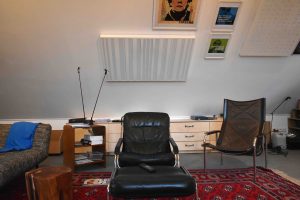
Listening position treatment
And maybe the slightly blurred presence and depth of image helps to overcome audiophile misbehaving. No beans counting, just music!
Measurements
Another interesting aspect: Bass is very clean and impressive, despite the low level measured at the listening position.
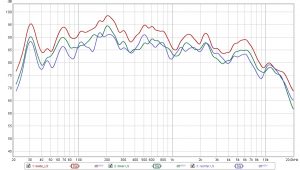
Listening position SPL vs frequency sm6
1/6 oct smoothing, single shots – no geometric averaging. Good left and right correlation, without cancellation of L + R (red).
Crossover range (200 Hz peak) could easily be corrected via DSP, but is tuned by ear for „neutral“ sound. With good results …
Such a lower midrange peak would sound muddy with speakers of less directivity and clarity. Here, it just provides a very immersive picture of the recorded event, with a slightly warm, huge sound.
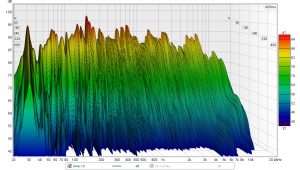
listening position waterfall
Fast decay besides a single active room mode. Neither piles of basstraps nor dead acoustics, though! Just solid engineering 🙂
Fazit
Of course I am still very happy with my „regular“ designs, and prefer them with some music. But there is something to learn about the value of optimizing only SOME aspects of an audio system. Effortless dynamics with good directivity and LF reproduction (both loudspeaker and room acoustics) help a lot to overcome other deficiencies, especially with popular music. Similar to widebanders directly coupled to good amplifiers, but much more involving, with less distortion and beaming issues.
What might happen if such a system is transformed into lower coloration and perfect step response capability, with a purely anlog signal path ?
Well, lets wait, work and see.